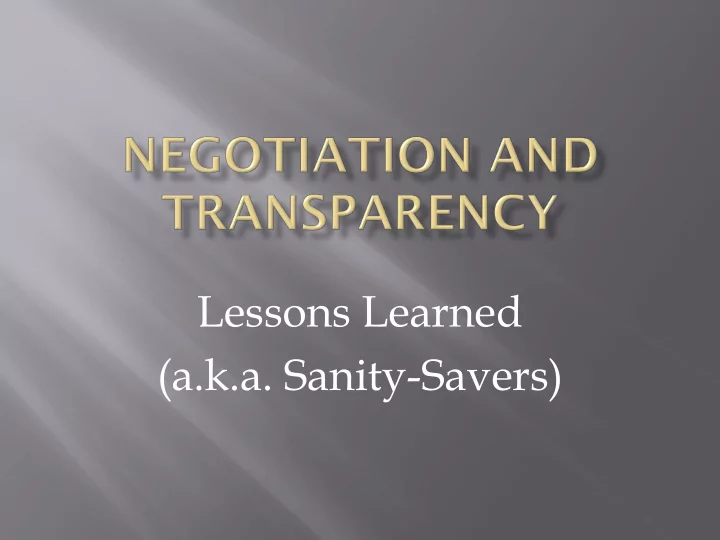

Lessons Learned (a.k.a. Sanity-Savers)
Excellence Discount Rate Diversity
39% Admissions 1. Financial aid 2. Enrollment 3. 27% management Marketing 4. Cooking 18% 5. Other 6. 8% 6% 2% 1 2 3 4 5 6
66% Once a year 1. Twice a year 2. More often 3. Rarely 4. Never 5. 20% 10% 2% 2% 1 2 3 4 5
52% Yes 1. No 2. 34% I’m conflicted 3. 14% 1 2 3
Align the institution. Long-term vision Institutional strategy and goals Office strategy, policies, and practices Achieve balance by weighing benefits of various outcomes. Address inevitable conflicts of values and goals Negotiate trade-offs at the senior administrative level Base decisions on evidence and projected outcomes Communicate decisions throughout the institution
39% A lot – a big increase 38% 1. Some – a modest 2. increase None – we can stay 3. 21% where we are None – okay to reduce 4. enrollment 2% 1 2 3 4
Protect quality and quantity. Enrollment increases can serve immediate need for net revenue But notable sacrifices in quality can reduce enrollment potential in longer term Let reputation and value proposition lead Avoid rapid enrollment increases. Community often cannot provide same level of service Discount rate is accelerated Lack of readiness for growth can lead to increased attrition
0% Extremely 1. 4% Very 2. 22% 29% Somewhat 3. Not very 4. Not at all 5. 45% 1 2 3 4 5
Extremely 1. Very 0% 0% 2. 23% 27% Somewhat 3. Not very 4. Not at all 5. 50% 1 2 3 4 5
Help families plan for a four-year commitment. Many are too focused on first year Student indebtedness is emerging as a huge issue Consider friendlier aid policies for returning students. Review satisfactory progress policies Calculate positive net revenue outcomes from retention-boosting, need-based aid supplements Communicate institutional response (if any) to reductions in state grant programs
34% Extremely 1. 29% Very 2. Somewhat 3. 20% Not very 4. Not at all 5. 14% 4% 1 2 3 4 5
44% 44% Always 1. Often 2. On occasion 3. Not at all 4. 13% 0% 1 2 3 4
46% Much more frequent 1. Somewhat more 2. frequent 28% About the same 3. Somewhat less often 20% 4. Much less often 5. 4% 2% 1 2 3 4 5
Build on families’ persisting commitment to higher education. CDIS survey confirms high value of higher ed Mass media is not our friend Reward families that invest in your institution. Is your mission distinctive, clear to you, and evident to your students/families? Do you know what families expect from their educational experience at your institution? How do you focus resources to invest in/deliver value to your students?
Reasonably 1. 5% transparent Selectively 2. 39% 55% transparent We don’t have a clue 3. 1 2 3
Reasonably 1. 21% transparent 38% Selectively 2. transparent Families don’t have a 3. 40% clue 1 2 3
Begin internally. Reasonable transparency on the health of the institution is critical Establishment of appropriate understanding of urgency helps to address challenges more rapidly Deliver/Improve on marketing promises. How are new students/families negatively surprised? How does information feed back to admissions and financial aid?
High Need Moderate Low/No No Need Student Name Hannah Need Molly Need Lindsay Nora Smith Net Price $7,550 $42,500 $47,599 $56,866 IM Net Price $9,900 $42,288 $44,096 $56,917 568 Group Net Price $1,830 $36,230 $51,980 $56,340 $34,654 $38,454 $38,454 $38,454 Public Flagship Net Price $31,428 $55,512 $55,512 $55,512 UC Berkeley Net Price
Recommend
More recommend